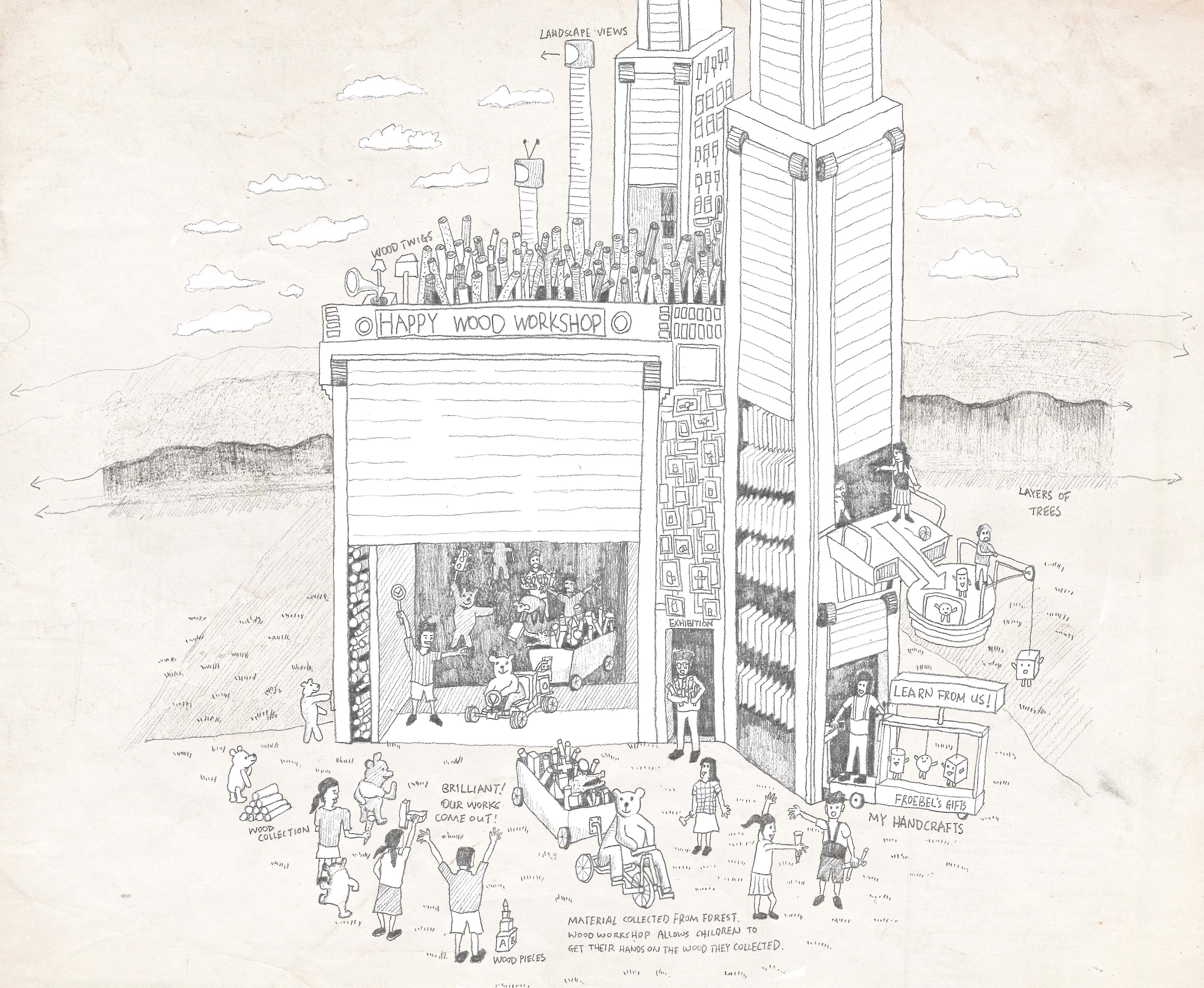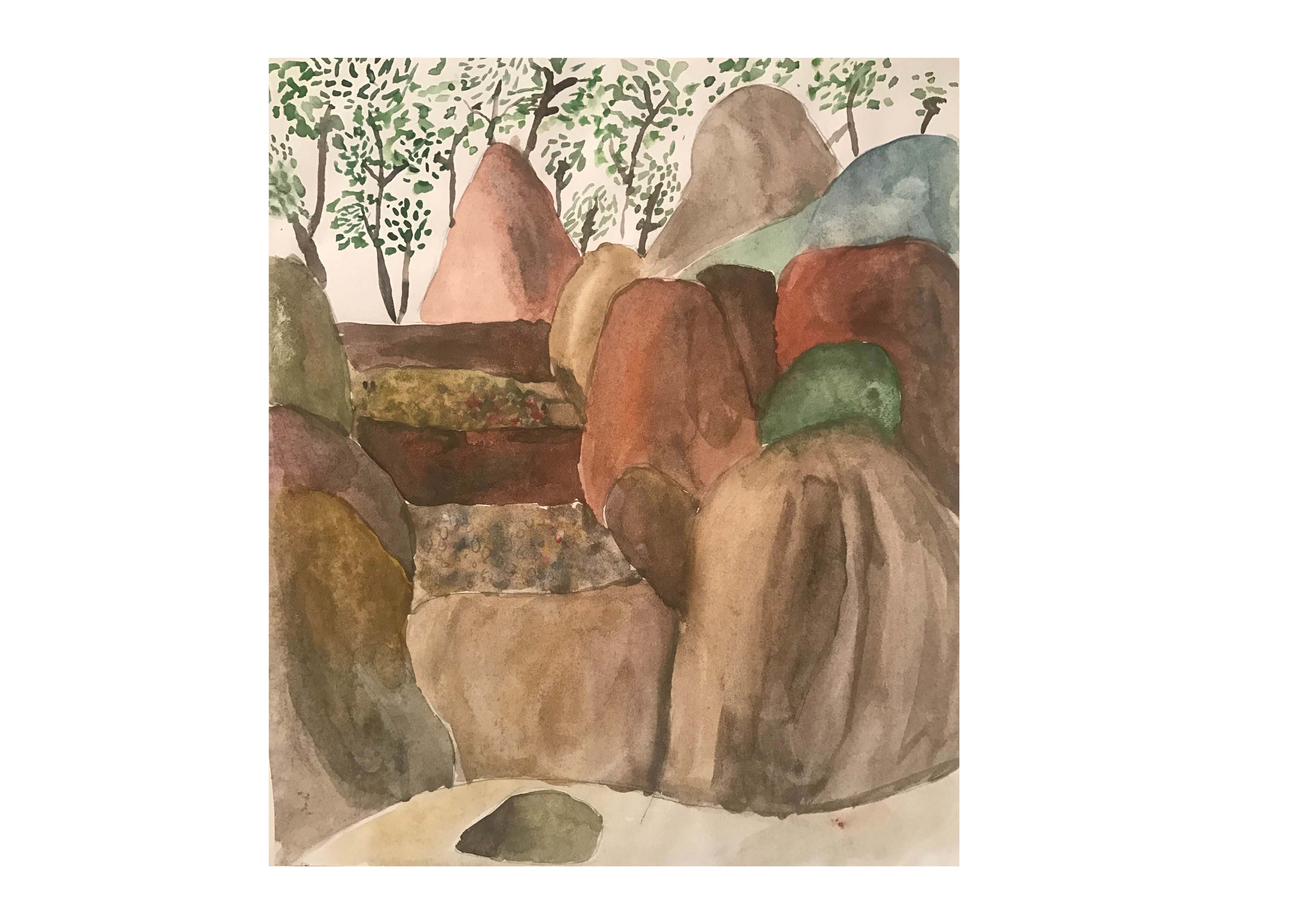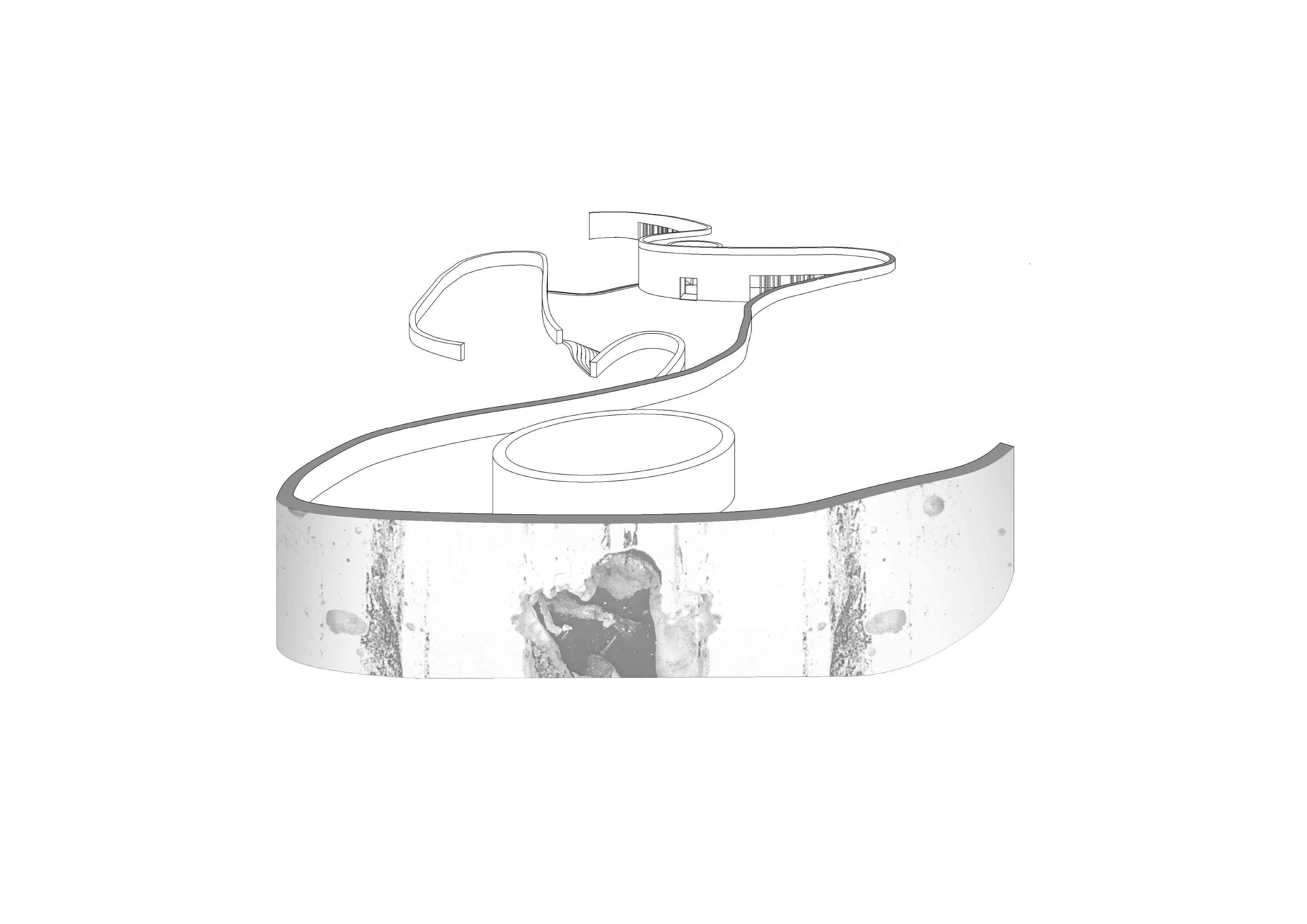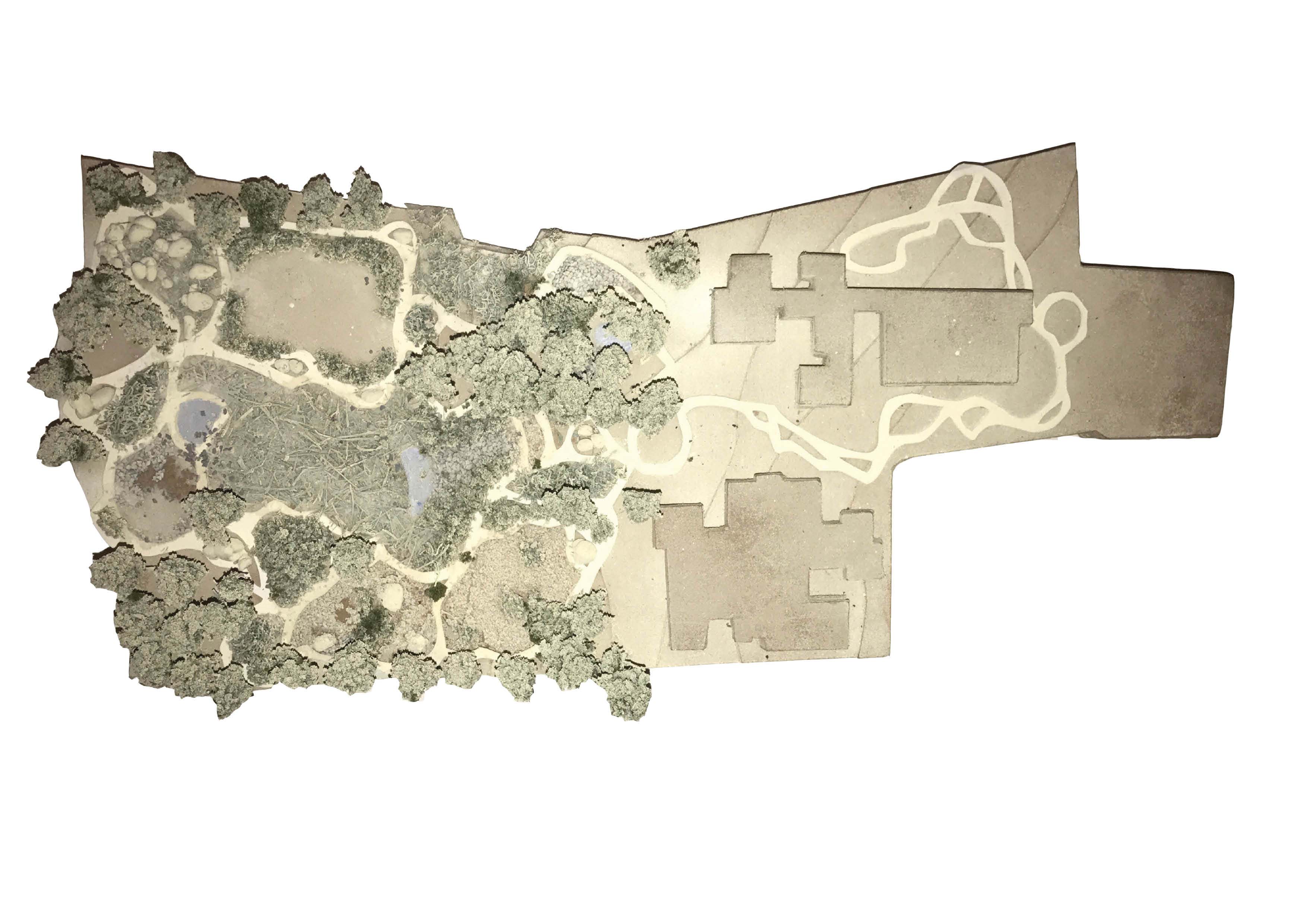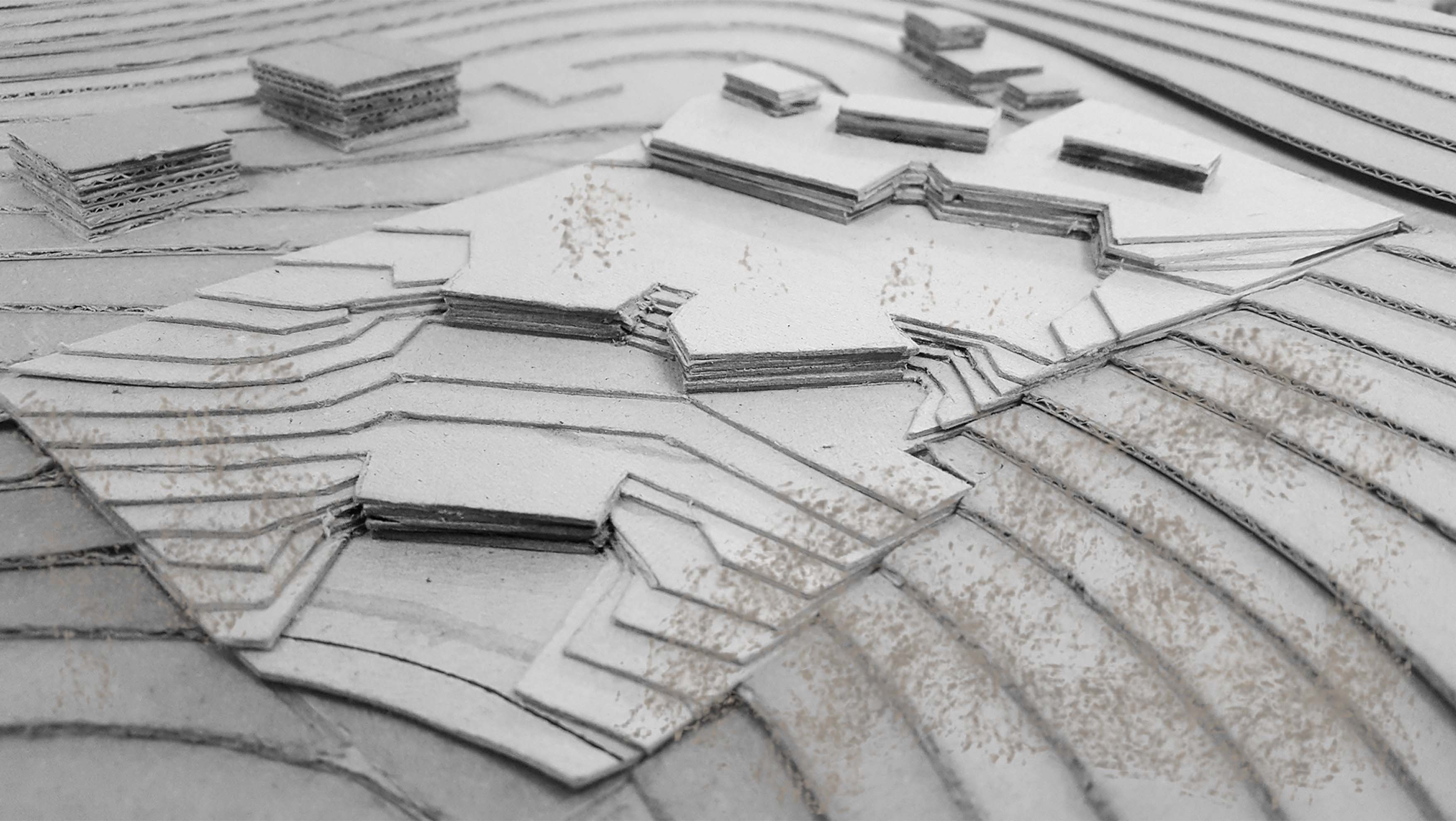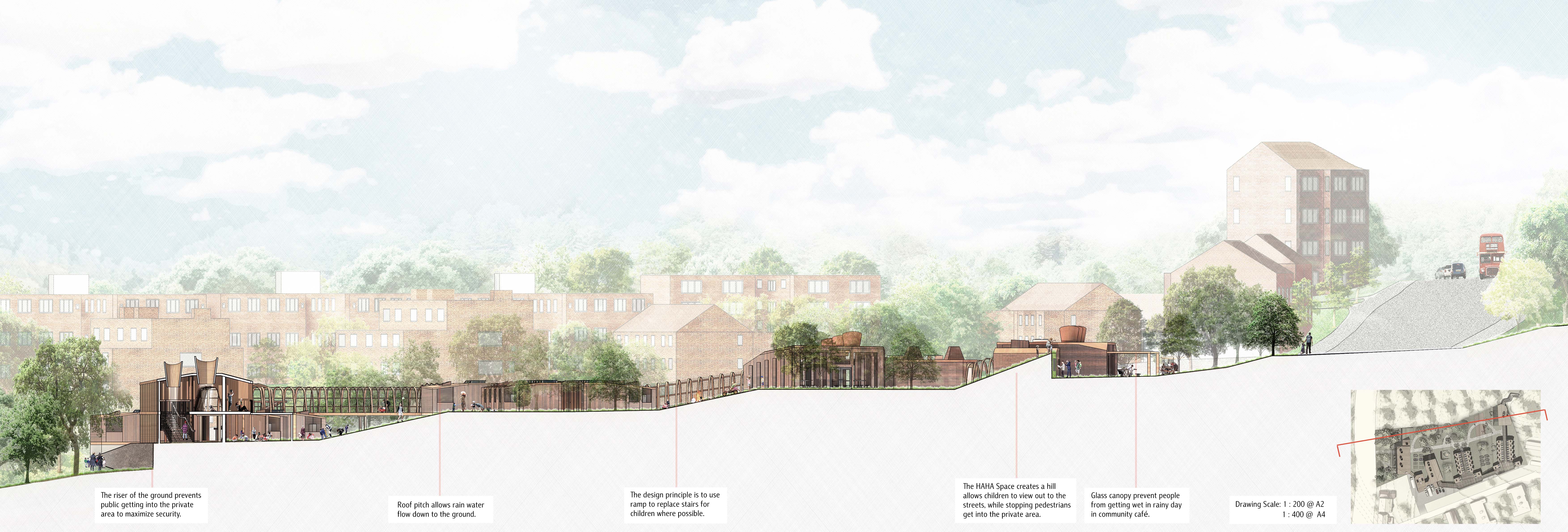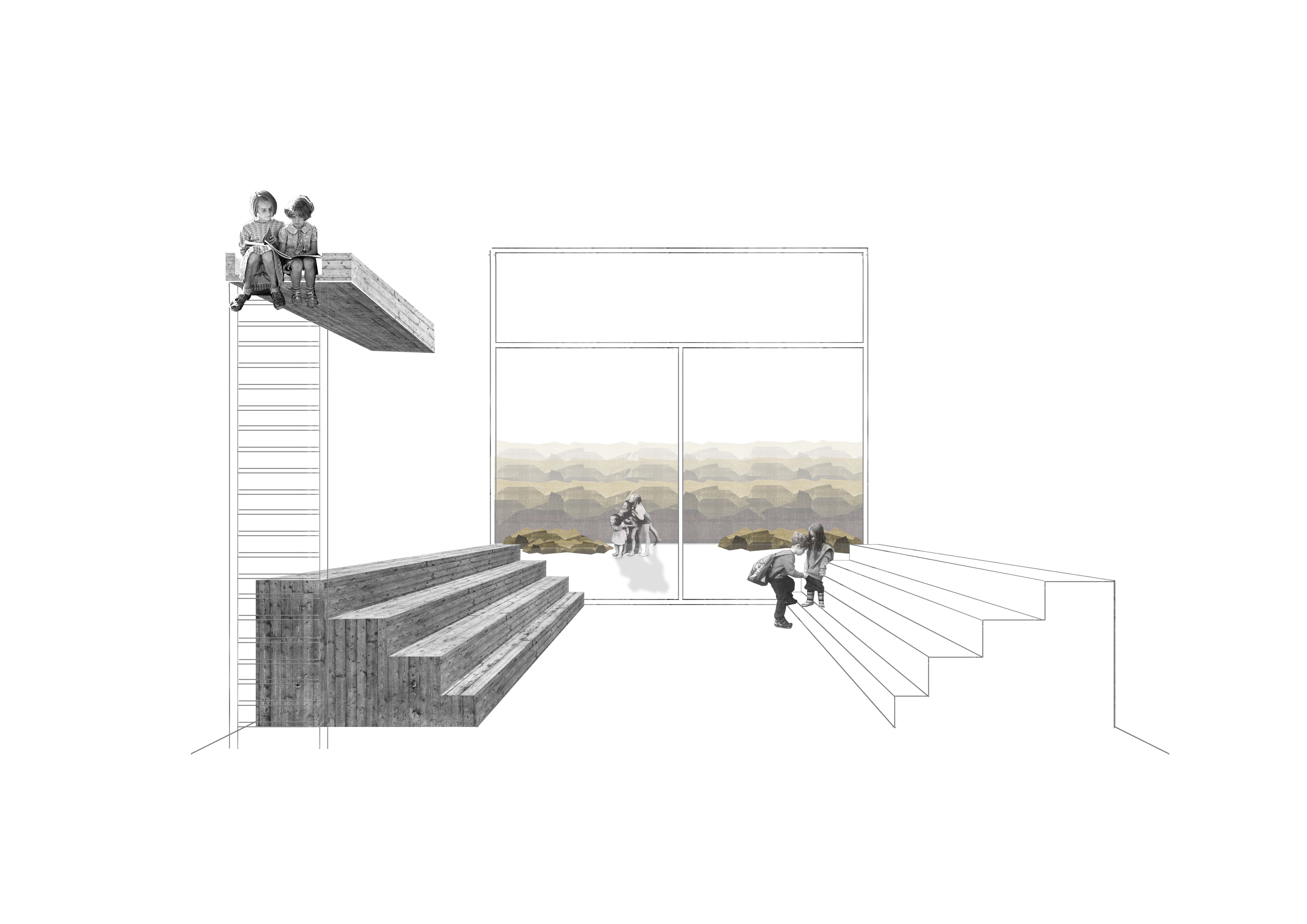YEAR TWO – DS2.4
Tutors: Julian Williams & Maria Kramer
Julian Williams worked as a project architect for 20 years before moving into full-time teaching. Ten of these were spent at muf architecture/art, collaborating with artists on public realm landscape works and projects for young people. His current research is on the experience of LGBT professionals, and the study of public housing landscapes.
Maria Kramer is an architect and has been in practice for more than 15 years. She was a partner and co-managed leit-werk before setting up her own studio, Room 102, in 2011. Maria teaches on the Part III Professional Practice course and in MArch studio DS12.
Landscapes of the Eye, and of the Mind’s Eye
The studio discussed what it means to live and learn outside, to explore landscape as a cultural artefact, an educational resource, and in architectural dimensions. Our students tried out Bharat Cornell’s exercises for sharing nature with children, drew the woodland canopy and went on to design two projects for the emerging Forest School movement. This advocates getting children and young people out of the classroom by teaching the regular curriculum in an outdoor ‘natural’ setting, using simply available natural materials and the immediate surroundings as starting points for scientific, literary and cultural learning.
Nature Nook
For St Michael’s School in Highgate, our students examined the funding problems confronting the maintenance of school grounds, and the factors limiting outdoor playing and learning. They developed landscape strategies to respond to this context; designed a ‘Forest School’ space; and a shelter for teaching in a landscaped setting and storing teaching materials and equipment. They speculated on how Forest School ideas could be extended as an ambitious architecture, not just in a rural setting but within the challenges of the inner suburbs.
Queen’s Wood Retreat
We listened to expert allotment growers, Forest School practitioners and school teachers, and then developed designs to transform a brownfield site adjacent to Queen’s Wood Highgate into a centre for Forest School practice. Escaping to the wilds at the end of a twenty-minute bus ride rather than a two-hour coach journey. Through the child’s eye we understood the importance of the journey of discovery from the bus-stop to the camp fire, making Forest School residentials accessible to the most hard-pressed, with space to stay and learn far away from the classroom timetable.



